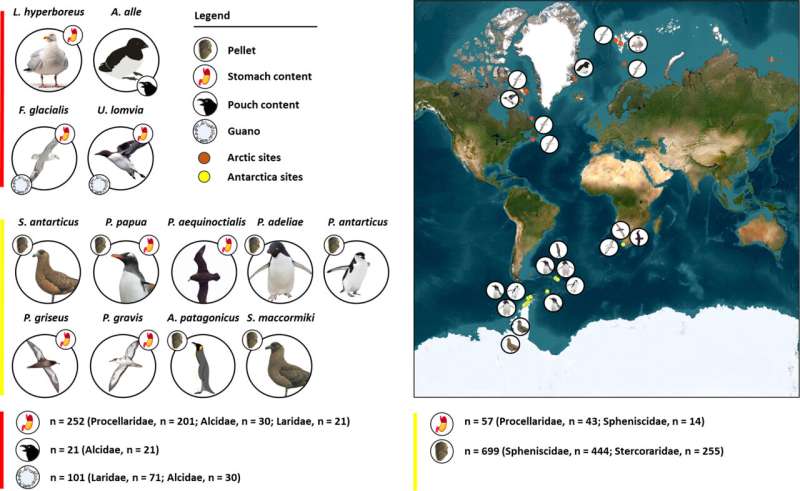Polar plastic: 97% of sampled Antarctic seabirds found to have ingested microplastics

Anthropogenic plastic pollution is often experienced through evocative images of marine animals caught in floating debris, yet its reach is far more expansive. The polar regions of the Arctic and Antarctica are increasingly experiencing the impacts of plastic reaching floating ice and land, not solely as larger macroplastics (>5 cm), but as microplastics (0.1 µm—5 mm) and nanoplastics (<0.1 µm) that may be carried vast distances from their source or be ingested in more populated areas during seasonal migration.
A new review, published in Frontiers in Marine Science, has investigated the scale of this issue, particularly with respect to seabirds who call these glaciated regions home.
Ph.D. researcher Davide Taurozzi and Professor Massimiliano Scalici, of Roma Tre University, Italy, embarked on a project to summarize 40 years of research into seabird ingestion of microplastics, from 1983 to the present day.
Across >1,100 samples, the researchers explored stomach contents, crop pouch near the throat for temporary food storage during foraging trips, guano (excrement mixture of food and metabolic waste) and regurgitated pellets of undigested food and other particles. Pellets formed the main component of the samples, followed by stomach contents and guano, while pouch contents were minimally present.
…click on the above link to read the rest of the article…